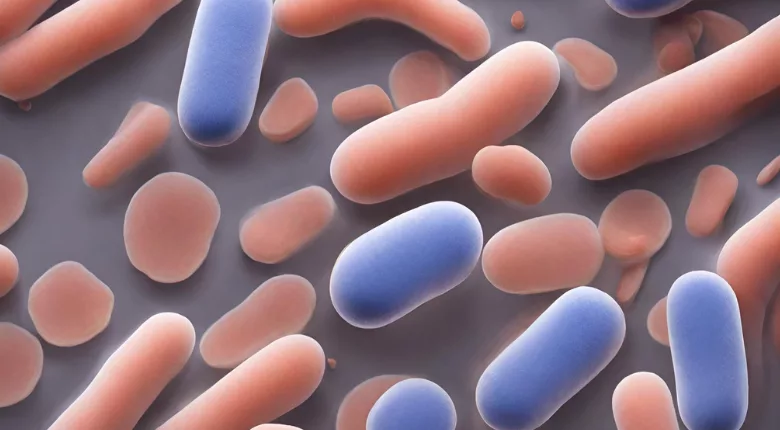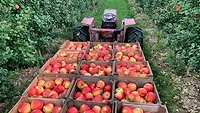Efficacy of Eco-Friendly Sanitation Methods Against Listeria Biofilms in Food Production Environments

Image credit: Canva Magic Media
The implementation of environmentally friendly, anti-biofilm treatments for Listeria monocytogenes in food production establishments should begin from an in-depth knowledge of individual environments and cannot disregard possible resistance patterns that the pathogen could develop, according to a recent study.
Alongside traditional decontamination methods, in recent years, environmentally friendly sanitation techniques including electrolyzed water, plasma-activated water, ozone, and enzymes, have been proposed as anti-biofilm strategies with considerable antimicrobial potential. However, some data has shown significant variability in the response of L. monocytogenes biofilms to these approaches, perhaps due to different environmental conditions and parameters, as well as genetic determinants or resistance mechanisms of different strains. The study involved a review of available recent literature on the effect that various eco-friendly inactivation techniques have on L. monocytogenes biofilms.
In general, data suggest that when biofilm is the target, it is recommended to increase active ingredient concentrations and exposure times as much as possible, bearing in mind production cycles and possible toxicity for operators of certain substances. Intervention strategies should also be designed according to surface materials in the production environment, as the anti-biofilm effect may differ across substances. The presence of residual organic matter in the environment can also affect the antimicrobial power of the technologies and increase the tolerance of strains.
The researchers found that voltage, electrolysis time, and sodium chloride concentration are important parameters affecting the physicochemical properties of electrolyzed water and, therefore, the antimicrobial effect. Available chlorine concentration proved to be the main factor affecting slightly acidic electrolyzed water. Among the types of electrolyzed water, the acidic type demonstrated the greatest antimicrobial activity, but its strong acidity and corrosive potential may limit its long-term use on surfaces. Slightly acidic and neutral electrolyzed water have been proposed to solve problems related to low pH. However, alkaline electrolyzed water can have fewer applications as disinfectant due to its poor bactericidal efficiency, but data suggest that it may be useful in certain post-harvest treatments of fruits.
Regarding plasma-activated water, although its disinfection ability against planktonic bacteria has been largely demonstrated, its efficacy against biofilm is still debated. Some studies have shown a direct relationship between plasma-activated water generation parameters and biocidal activity, and while plasma-activated water has shown effective colony-forming reduction, scanning electron microscopy images revealed relatively low structural damages, and confocal laser scanning microscopy confirmed a partial inactivation of cells, but not death. These findings suggest that, alongside classical viable cell counts, it would be useful to study the anti-biofilm effect of plasma-activated water treatments by combining multiple methods, to help reveal the impact of plasma-activated water on biofilm structure and detecting damaged but still living bacteria. These cells may become not detectable on standard culture media and could potentially persist in environments and form biofilms again.
Ozone has been studied extensively for its biocidal activity and various parameters are known to influence its efficacy, such as pH, radicals concentration, temperature, and relative humidity. Both aqueous and gaseous forms have antimicrobial action. The former has higher biocidal activity, while the latter has longer half-life, which may represent a favorable property for biofilm removal, although high concentrations are required to achieve an effect on biofilm. The high concentrations of ozone required to counteract biofilm can limit the application of ozone to closing days or in the absence of operators, since it can be toxic to humans. Its possible corrosive effect on materials resulting from long-term use must also be evaluated.
Enzymes have been studied for their action on biofilm matrix, quorum sensing signaling, and adhesiveness to cells and other enzymes involved in microorganism growth. The efficacy of enzyme products is greatly determined by their composition and can be affected by application temperature. Since enzymatic detergents can facilitate conventional cleaners’ penetration in cells due to their biofilm matrix-disrupting ability, their use has been proposed in combination with chlorine disinfectants. One study suggested bromelain to have the greatest anti-biofilm effect by interrupting certain processes of L. monocytogenes, and that it could be suitable for food processing applications.
Finally, L. monocytogenes strain-dependent behavior after stress exposure was recently observed in different surveys on biofilm. A complete preliminary mapping of genetic features and stress response mechanisms of strains in each facility in which a given technology will be applied would be ideal, but is unrealistic. Future studies on the anti-biofilm effect of eco-friendly inactivation methods should include a greater variety of wild-type strains, to better understand the strain-dependent response to stressors and strain-specific features determining resistance.
Looking for quick answers on food safety topics?
Try Ask FSM, our new smart AI search tool.
Ask FSM →









